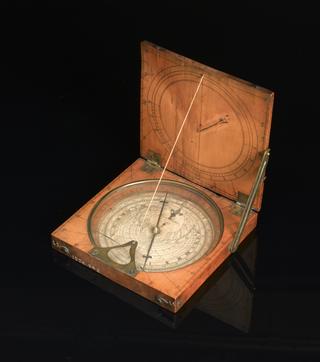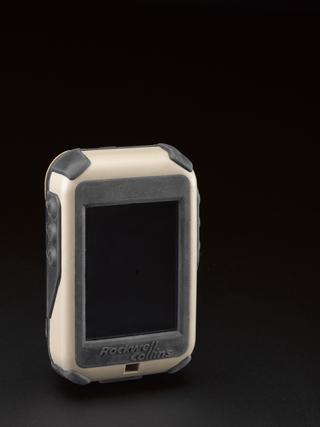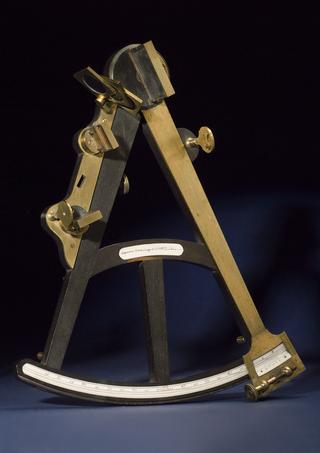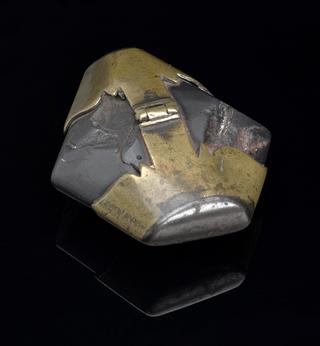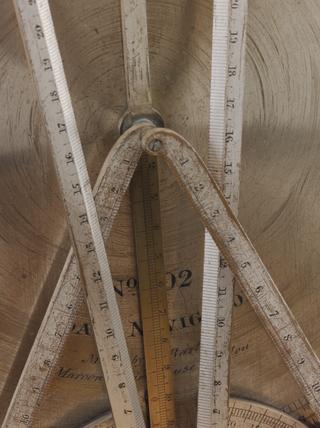
Octant made of ebony and brass
- maker:
- John Smith

Octant made by John Smith, London, about 1830. Ebony frame and limb with brass index arm and fittings; an inlaid ivory plate on the crossbar. Signed on the plate on the crossbar: J. SMITH 126 Wapping LONDON. Radius 9 inches. Inlaid ivory scale from -3° to 96°, every 20'. Ivory vernier to 1', zero at the right. The tangent screw and clamping screw are on the back of the index arm. Three shades (two red, one green); three horizon shades (two red, one green). Index-glass adjustment by screw; adjustment of the horizon glass by a fixed screw and a lever, worm gear and a milled clamping screw. The sight vane is lacking. No box.
(B 696)
Navigational instrument. Octants were used by navigators to determine a ship's latitude by measuring the angle between the horizon and a celestial body, such as the Sun.
Details
- Category:
- Navigation
- Object Number:
- 1981-845
- Materials:
- ivory, brass (copper, zinc alloy) and ebony (wood)
- type:
- octant
- credit:
- Wellcome Trust
